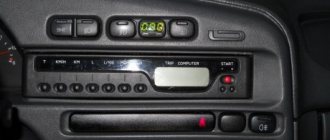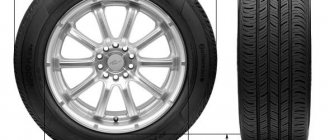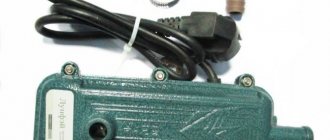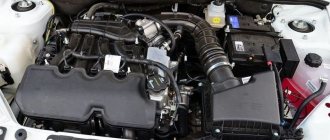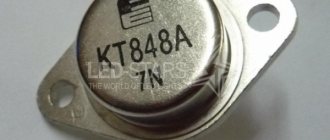What it is
Let's start with a simple definition of the concept of a Hydronic preheater.
This is a special autonomous system designed to warm up the vehicle before starting the engine itself. Not only the engine, but also the interior can heat the device to create optimal temperature conditions. By carrying out pre-start preparation of the power plant, it is possible not only to reduce the rate of wear of engine components, but also to have a positive effect on reducing fuel consumption. The interior heating function creates the necessary level of comfort for the driver and passengers of his car.
If we talk about what a Hydronic installed in a car is, it can be described as a mini-engine. It replaces the engine of the car itself, performing warm-up functions. Heaters are used when car owners themselves are still sitting at home, having breakfast, solving some household issues, but intend to get behind the wheel in the near future and go on business.
Hydronic is capable of heating the power plant itself, providing a comfortable temperature inside the cabin, and defrosting the windshield wipers and windshield.
Hydronic is manufactured by a company from Germany with the rather complex name Eberspacher. Perhaps it is precisely because of the difficulty of pronunciation that people mostly hear the name of the model range of manufactured preheaters.
Some will be interested to know that this German company actually started out with completely different products. After its founding, which dates back to 1865, the company specialized in metal frames intended for glazing roofs. Already as a result of its long existence, modernization of production and repurposing, the manufacturer switched to the creation of pre-heaters, as well as a wide range of other devices.
An important feature of Hydronic is not only that it warms up the engine and the interior of the car. The device is also capable of performing a reheating function.
That is, the device provides support to the engine, helping it reach optimal temperature levels in a shorter period of time.
The device operates remotely. Using a special remote control, you can start the heater from a certain distance. This allows you not to leave your apartment or house to start the warming up process. Usually, drivers simply look out of a window or from a balcony, press a button and Hydronic starts working.
Common features
What is a cylinder head in a car?
After replacing the cylinder head gasket, the car does not start, what to do? What is a cylinder head in a car? Both the Hydronic and the Webasto are based on the same principle of operation: the heater is included in a small cooling circle of the car, the fuel coming from the tank burns in the chamber allocated for it and heats the cooler. Antifreeze with a raised temperature is sent to both the engine and the stove. For diesel engines, an additional reheating function is provided: if the antifreeze cools too much while driving (the temperature drops below the set temperature), the heater turns on and brings it to the required degree. Identity is maintained even in the production of individual components. In particular, electronics for both brands are supplied by one manufacturer -.
Scope of application and installation
What is an arrow
Option for installing Hydronic in the engine compartment
It is designed for different types of transport - from small compact cars to trucks and buses. For this purpose, heater options are available with different heating powers, so the ideal choice depends on the engine size, and, consequently, the volume of coolant.
For an engine whose volume does not exceed 2.2 liters, the ideal option would be to install the hydronic model - 4. Volume from 2.3 to 5.5 liters requires the installation of hydronic - 5. Models numbered 10 are suitable for engines from 5.5 up to 15 liters, and 24-35 are suitable for large volumes of coolant and are installed on buses and trucks. By the way, about the sizes. In this regard, the latest Eberspächer Hydronic models have a big advantage, since their design consists of several elements and the pump is made separately. This positive feature allows you to place the preheater in the engine compartment of almost any car. Installation locations can vary significantly depending on the model and brand of machine:
- Behind the bumper (heater manufacturers recommend);
- In the engine compartment;
- In the wheel well;
- On the bottom of the car.
Since the coolant heater is a technically complex device that is connected to all operating systems of the car, it is better to entrust the installation of Hydronic to professionals. In addition, its installation requires special tools. The statistics of car damage due to incorrect installation of the heater is amazing - almost 80% of accidents or equipment breakdowns occur precisely for this reason. Installation of equipment by specialists will cost from 8 to 15 thousand rubles, but will allow you to protect yourself and your car. Also, do not violate the operating conditions of the equipment - repairs are carried out only in specialized service centers and are quite expensive. Well, we looked at what Hydronic is in a car, its operating principle and features. In conclusion, I would like to remind you that pre-heaters consume electricity for their operation, so you must monitor the condition of the battery and follow the rule - the operating time of Hydronic should not exceed the time the vehicle is moving.
Pre-heaters Eberspacher Hydronic (Eberspacher)
Eberspacher pre-heaters have been a model of reliability and functionality for many years for millions of car enthusiasts around the world, and have proven themselves well in Russia.
The Eberspacher pre-heater is designed to prepare a car engine for starting in the cold season, and allows car owners to start the engine without any problems, regardless of the ambient temperature.
At the same time, engine life and fuel are saved (one cold start and warm-up “eats” up to 1.5-2 liters of fuel). If an Eberspacher pre-heater is installed, then in any frost you arrive at a car prepared for immediate movement, with a hot engine, a warm interior, and thawed windows.
Eberspacher heaters:
By fuel type gasoline diesel
By power 4 kW 5 kW 9 kW 12 kW 30 kW 35 kW
Voltage 12V 24V
Pre-heater Eberspacher HYDRONIC S3 B5E with Original installation kit
202048050000
RUB 37,500
Type: Preheater Brand: Eberspacher Fuel: Gasoline Power: 5 kW Voltage: 12V
Preheater Eberspacher HYDRONIC S3 D5E with Original installation kit
252971050000
RUB 37,500
Type: Preheater Brand: Eberspacher Fuel: Diesel Power: 5 kW Voltage: 12V
Pre-heater Eberspacher HYDRONIC S3 D5E with Extended installation kit
252971050000
RUB 35,500
Type: Preheater Brand: Eberspacher Fuel: Diesel Power: 5 kW Voltage: 12V
Pre-heater Eberspacher HYDRONIC S3 B5E with extended installation kit
202048050000
NEW
RUB 35,500
Type: Preheater Brand: Eberspacher Fuel: Gasoline Power: 5 kW Voltage: 12V
Pre-heater Eberspacher HYDRONIC D10W with installation kit
25.2161.05.0000
RUR 79,500
Type: Pre-heater Brand: Eberspacher Fuel: Diesel Power: 9 kW Voltage: 24V
Pre-heater Eberspacher Hydronic D10W diesel (12V) with installation kit
25.2160.05.0000
85200 rub.
Type: Preheater Brand: Eberspacher Fuel: Diesel Power: 9 kW Voltage: 12V
Pre-heater Eberspacher HYDRONIC МII D12 with installation kit
25.2725.05.0000
RUB 75,000
Type: Preheater Brand: Eberspacher Fuel: Diesel Power: 12 kW Voltage: 24V
Pre-heater Eberspacher HYDRONIC МII D12 with installation kit
25.2596.05.0000
83000 rub.
Type: Preheater Brand: Eberspacher Fuel: Diesel Power: 12 kW Voltage: 12V
Eberspacher HYDRONIC S3 B4E preheater with basic installation kit and EasyStart Timer control
29.3320.11.4101
Timer included!
RUB 37,000
Type: Preheater Brand: Eberspacher Fuel: Gasoline Power: 4.3 kW Voltage: 12V
Eberspacher HYDRONIC S3 D4E preheater with basic installation kit and EasyStart Timer control
29.3325.11.4101
Timer included!
RUB 37,000
Type: Preheater Brand: Eberspacher Fuel: Diesel Power: 4.3 kW Voltage: 12V
Pre-heater Eberspacher HYDRONIC S3 B4E with extended installation kit
29.3320.11.4131
NEW
RUB 39,400
Type: Preheater Brand: Eberspacher Fuel: Gasoline Power: 4.3 kW Voltage: 12V
Preheater Eberspacher HYDRONIC S3 D4E with extended installation kit
29.3325.11.4131
RUB 39,400
Type: Preheater Brand: Eberspacher Fuel: Diesel Power: 4.3 kW Voltage: 12V
Preheater Eberspacher HYDRONIC S3 B5E with Basic installation kit
20.2048.05.0000
NEW
47900 rub.
Type: Preheater Brand: Eberspacher Fuel: Gasoline Power: 5 kW Voltage: 12V
Preheater Eberspacher HYDRONIC S3 D5E with Basic installation kit
25.2971.05.0000
NEW
47900 rub.
Type: Preheater Brand: Eberspacher Fuel: Diesel Power: 5 kW Voltage: 12V
Pre-heater Eberspacher HYDRONIC B5W S with installation kit
20.1862.05.0000
RUB 29,000
Type: Preheater Brand: Eberspacher Fuel: Gasoline Power: 5 kW Voltage: 12V
Pre-heater Eberspacher HYDRONIC D5W S with installation kit
25.2386.05.0000
54000 rub.
Type: Preheater Brand: Eberspacher Fuel: Diesel Power: 5 kW Voltage: 24V
* Installation costs are approximate.
All vehicles and installation conditions are different. The final cost of installation is determined by the foreman on site based on the complexity of the project.
Choosing the right power
What is a turbocharger on a car, its history of creation and operating principle. What is a turbocharger?
In any country, a wide variety of vehicles are used, with certain power ratings, engine displacement and other parameters. And this is an important aspect in the question of which heater from the Hydronic range should be selected and installed in your car.
The first thing you need to do is look at your engine, find out the engine size, so that the purchased pre-heater from the Hydronic series can fully cope with the task.
Hydronics are equally suitable for cars and trucks. Just what is suitable for a passenger car is unlikely to satisfy the needs of a truck. Conversely, there is no need to install Hydronic, which is designed for trucks, on a passenger car. Sometimes this is even impossible due to the large dimensions of the device.
All Hydronics produced by the German company are divided according to power indicators, which directly affects the volume of the heated area and the heating rate of the special liquid circulating through the cooling system. As a result, we can select Hydronics with parameters from 4 to 35 Volts. It is in Volts that the power of the preheater is determined.
Now let’s take a more specific look at the engine parameters and their volume to select the optimal heater model.
- For passenger car engines with a volume of no more than 2.2 liters, it will be enough to use the simplest Hydronic 4 models. Excellent price-performance ratio. Such devices consume a minimum amount of fuel, which is enough to fully preheat the engine and heat the cabin before boarding the driver and his passengers.
- For power units installed on passenger cars with a volume of 2.2-5.5 liters, more powerful 5 Volt models, that is, Hydronic 5, are suitable. They perfectly perform their tasks, efficiently consuming fuel and performing their functions efficiently.
- Minibuses and huge SUVs can benefit from the capabilities of Hydronic 10. These are already quite powerful models that passenger cars do not need.
- Hydronics for 24, 30 and 35 Volts are considered the most powerful. They are designed specifically for large passenger buses, trucks, vans, tractors and other heavy equipment. Their capabilities are enough to warm up impressive volumes of cooling liquid, as well as spacious interiors, like in passenger buses.
Remember one important pattern. The higher the power, the larger the size of the device for preheating the engine and warming up the interior. Be sure to take this point into account, since a too massive Hydronic simply may not fit in the engine compartment of your car during installation. And this will become a problem.
Comparison
Although the operating principle is the same in the models, it is implemented in different ways. From here there are further differences. First of all, the method of burning the supplied fuel differs. Webasto uses a catalytic tablet as the evaporator, while Gidronik installs a cylinder-shaped mesh into the device. Both ideas are successful and would not raise any complaints if they took into account the peculiarities of Russian fuel. However, the Germans are unaware of our realities. As a result, the tablet becomes coked quite quickly and the mesh becomes clogged. As a result, first the heater begins to malfunction and work worse, and then completely fails. Replacing the mesh with “Hydronic” will cost 2.5-3.5 thousand rubles; if the flame sensor on the Webasto tablet burns out, the situation is even worse - it is not sold separately, you need to change the combustion chamber as a set, and this is more than 10 thousand. True, this happens much less often than a clogged mesh.
- There are also design features in the layout of the heater. Webasto is much larger than its competitor, since it is a solid block. In "Gidronik" the individual components are spaced apart - the pump is made separately from the combustion chamber. As a result of this design decision, it can be installed in almost any car model. Webasto will require a fairly large free space under the hood;
- There are also differences in power consumption. “Gidronik” removes 48 W from the battery, “Webasto” only 21. This must be taken into account so as not to suddenly be left without charge on the battery;
- And finally, the price. "Gidronik" starts at 28.5 thousand rubles, "Webasto" - from 31. Installation of the first will cost 12,500, regardless of the model of the car and with all devices; for installation of an opponent they charge 12,500 - 14,000 plus payment for additional chips, for which you will have to pay about 5 thousand rubles.
No one claims that this opinion will be decisive when choosing which is better, Hydronic or Webasto. The only strong recommendation from professionals is not to try to install the heater yourself. The equipment is expensive and requires detailed and specific knowledge. Self-indulgence can have very unpleasant consequences. Statistics say that 80% of all cases of malfunctions of pre-heaters are caused by improper installation. And the remaining 15 are violations of the prescribed operating conditions. If you want to start without problems, pay for installation and carefully read the manual.
Operating principle and technical characteristics
Connection diagram for Hydronic to the cooling system
The heater is installed in the vehicle system and for its operation consumes fuel (from 400 to 700 ml per hour of operation) and electricity (from the battery). Therefore, for its operation it is also necessary to calculate the fuel reserves and monitor the battery charge. Gidronik's operating instructions describe the following operating principle of the device: after starting the heater, fuel and air enter the combustion chamber installed in the device, where they burn and heat the coolant. Hot antifreeze is directed through a pump into the car's cooling system, where it transfers heat to the engine, as well as to the radiator of the interior heater. The system sets temperature thresholds, upon reaching which Hydronic works partially, maintaining the temperature, turns off (if the upper limit is exceeded) or turns on automatically if the liquid begins to cool. The time for a full heating cycle is approximately 40 minutes. Its performance is comparable to several boilers, but the power consumption is significantly lower, which significantly saves battery power. During startup, Hydronic uses less charge than one low beam lamp. In addition, if the battery charge is insufficient, the heater will not start working. Having examined Hydronic and the principle of operation of the device, let’s move on to studying its technical characteristics (for a passenger car model):
- The voltage used is 12 V;
- Output power when heating from 2400 to 5000 W;
- Electrical power consumption: from 23 to 50 W;
- Overall dimensions of the device – 220 x 86 x 160 mm
- Fuel consumption during operation – 0.27 – 0.62 l/hour
- Hydronic weight from 2.9 kg.
Advantages of HYDRONIC boilers
The boilers are characterized by increased reliability, compactness and ease of operation thanks to a number of advanced technical and scientific solutions.
High coolant speed (over 2.1 m/s)
- minimum deposits on the inner surface of the heat exchanger;
- almost constant efficiency throughout the entire service life;
- ability to work with water of varying hardness.
Use of seamless finned tubes in heat exchangers
- increase in heat exchange surface;
- maximum heat transfer;
- corrosion resistance.
Ultra-low volume of water in the boiler (1 MW of power requires only 35 liters)
- small size and weight of boilers;
- complete explosion safety;
- minimal heat loss;
- absence of thermal inertia - speed of regulation.
Principle of operation
It is necessary to understand the operating features of Hydronic preheaters. These are liquid heaters that work with the vehicle’s coolant to warm up the engine and interior. When the device starts, the car fan turns on in parallel. It is thanks to this that the interior is heated.
But we must not forget that this is an engine, albeit of a compact size. And it runs on fuel. Therefore, switching on is accompanied by a certain consumption of fuel poured into the vehicle tank. At the same time, the device affects the battery, gradually reducing its charge.
This is extremely important to consider before purchasing and when installing Hydronic
If you look at the design, the heater consists of:
- motor-compressor;
- control unit;
- fuel metering pump;
- filament pin;
- flame sensor;
- liquid pump;
- temperature sensor;
- overheat sensor.
Taking into account all the components of Hydronic, you can better understand the principle of its operation. The device operates as follows:
The device operates as follows:
- the device turns on after a command from the control panel or at a time specified by preliminary programming;
- air is taken from outside for the combustion chamber of the mini-motor;
- fuel comes from the fuel tank;
- the components are mixed in the chamber and ignited due to the operation of the filament pin;
- the heat exchanger begins to transfer thermal energy from the combustion of the air-fuel mixture to the car’s own cooling system;
- the antifreeze, that is, the coolant, is heated;
- the water pump pumps heated liquid through the small circuit of the engine, which helps warm it up;
- when the temperature reaches 85 degrees Celsius, fuel stops flowing into the chamber, as does air;
- the device goes into standby mode, and at this moment only the water pump works;
- if the temperature drops below 75 degrees, the sensor reacts to this and starts the heater again;
- having completed the work according to the set time or after switching off via the control panel, Hydronic operation stops;
- when turned off, the fuel supply is shut off and combustion stops;
- but the burner fan remains active for another 2 minutes.
If necessary, you can start Hydronic when the car engine is already running. This allows you to perform the function of reheating the power unit. The heater will work on a similar principle.
At its core, the operating principle is based on using the automotive cooling system of the internal combustion engine to warm it up.
Models from 480 to 1200 kW
| Standard size | A | B | C | V |
| Hydronic 480 | 1410 | 1600 | 622 | 559 |
| Hydronic 580 | 1664 | 1854 | 622 | 610 |
| Hydronic 730 | 1981 | 2172 | 622 | 660 |
| Hydronic 840 | 2235 | 2426 | 622 | 711 |
| Hydronic 970 | 2553 | 2743 | 622 | 762 |
| Hydronic 1080 | 2794 | 2997 | 622 | 813 |
| Hydronic 1200 | 3124 | 3315 | 622 | 864 |
The weight of the boiler is 2-3 times less than the weight of boilers of the corresponding power from any other manufacturers, including foreign ones. Overall dimensions and completely dismountable design allow the boilers to be carried through any door. The design of the boilers allows them to be completely disassembled and reassembled by 2 specialists within a few hours without the involvement of lifting equipment and special equipment, which allows them to be installed on the roofs of buildings of any number of floors.
The scope of installation work is minimal, since the boiler is assembled entirely at the factory, including gas equipment, automation devices, a safety group, and is tested on a bench. The heat exchanger is easily accessible for inspection and maintenance.
Turning on the heating
Hydronic heater control panels
There are several ways to get Hydronic, the preheater, to work. The standard option is to display a button or screen with additional settings in the car interior. This is not entirely convenient, as it requires going to the car to start heating.
You can set the start by timer and the heater will heat the coolant at the specified time. This option is of course more convenient, but it may not be suitable for everyone, since you don’t always know when you need to go. An excellent solution is to install an additional Hydronic gsm module, and the heater can be controlled from the alarm key fob. If the signaling is simple, without gsm, then, for example, a system for pre-heaters is suitable, which is installed in the interior under the panel and involves the use of any convenient SIM card. Control is done by dialing a specific number on the phone, and in response you receive a complete description of the system state - from engine temperature to battery voltage. Also, all of these system startup options allow for various combinations with each other. The operating time of the Hydronic preheater is set based on the air temperature. When the thermometer readings are up to -10, the suitable operating time is from 20 to 40 minutes. If the temperature is lower, the operating time is extended to two hours. There are models of timers for Hydronic that automatically calculate the operating time of the heater - the car owner only sets the time of the intended trip.
Heater control devices
Control systems are purchased separately. There are three control options:
- stationary;
- remote;
- mobile.
The stationary versions include an EasyStart Timer and an EasyStart Select control. The devices are installed inside the car. Easy and advanced controls, feedback, frost-resistant display and many other functions.
The remote devices have two key fobs: EasyStart Remote and EasyStart Remote+, which is distinguished by the presence of a timer and display. The operating range of the devices is 1,000 meters.
Mobile application EasyStart Text+
The EasyStart Text+ mobile application is available for smartphones. Communication with the device via GPS. Has all the necessary control functions.
The Eberspächer company has established itself well in the market for additional heaters for cars. These are reliable and proven devices. Any driver will find a suitable heater model for his car.
Device cost
A separate issue is the price of Hydronic, which depends on the model and power of the device. You can find this heater for 28 -29 thousand rubles, and some models cost up to 70 thousand rubles. Its installation in a professional center will cost 8-15 thousand. Additionally, you can purchase a control panel that operates remotely, but this will also require investment. For this useful application you will have to pay from 13 to 18 thousand. At the same time, it supports the ability to program the heater for 24 hours, and up to three start time options are installed. The range is up to 1 km, in the absence of signal interference. So, how much does Hydronic cost? Its total cost - purchase, installation, additional devices - will cost an average of 60-100 thousand rubles, and if this is your option, we will consider its scope and installation.
Hydronic vs Webasto
When it comes to engine preheaters, the first thing that pops up in the subconscious of most car enthusiasts is the concept of Webasto. This is another heater that is in great demand. What’s most interesting is that it is also produced by a company from Germany.
Therefore, Gidronik and Webasto are rightly considered competitors in the pre-heater market. And in this regard, car enthusiasts have a natural question. They are interested in who is better to choose - Webasto or Hydronic for installation in the engine compartment of their vehicle.
Comparing two heaters is quite difficult. It is almost impossible to draw final conclusions and name a leader. Everyone must decide for themselves which characteristics are a priority and what they can turn a blind eye to.
The comparative characteristics allow us to draw the following conclusions:
- hydronics at maximum power can consume 0.6 liters. fuel for 1 hour of work. At minimum power, consumption drops to 0.2 liters. For Webasto, the figures are 0.51 and 0.26 liters, respectively, which makes the latter heater somewhat more economical;
- Webasto does not warm up the interior space as quickly as its competitor is capable of doing;
- but Hydronic cannot be controlled by the user using a special application installed on a smartphone, which Webasto manufacturers actively boast about;
- in terms of energy consumption and energy efficiency, superiority by a small margin is still on the side of Webasto;
- An important and, for many, key advantage of Hydronic is its maintainability. It will not be possible to restore Webasto functionality if it breaks down;
- Both devices sometimes generate errors and become blocked in conditions of extremely low temperatures. But if Webasto can be manually unlocked on its own, to unlock a competitor you will have to go to a service center.
Many people are surprised by how similar both pre-heaters are to each other. They really have a lot in common, similar characteristics, capabilities, and some of the same strengths and weaknesses.
And they are developing almost in parallel, not wanting to give in to their main competitor in the market of pre-heaters for internal combustion engines.
But you will cease to be surprised by this fact of such striking similarity when you learn one important nuance. The thing is that until recently, when highly efficient heaters began to be produced, the manufacturers Webasto and Hydronic were one enterprise. Then they split up, continuing to produce a device for warming up the engine and interior under their own brands. Hence the striking similarity in the design and operating patterns of the devices.
Taking into account all these nuances, each motorist will be able to draw certain conclusions for himself. First, decide whether to purchase a pre-heater. In reality, not everyone needs it and not everywhere. They are mainly in demand in regions with cold winters, where starting the engine without preheating is really dangerous in terms of wear and negative consequences from constant cold starts.
If you understand that a heater is needed, then you only have to choose between actually two options. Webasto and Hydronic are similar, but there is a certain difference between them, which you already learned about earlier.
It is recommended to entrust the installation issue to specialists. Connecting heaters to the engine, fuel system and liquid cooling system has its own nuances. Installation can be carried out based on the manufacturer's instructions, but in order to ensure correct installation and eliminate possible errors, it will be better if this task is performed by qualified craftsmen.
Autonomous engine pre-heaters
Autonomous pre-heaters Hydronic
with a power of 4 and 5 kW are intended for installation on passenger cars and can be used for:
- preheating the engine at low temperatures for safe starting
- warming up the interior and windshield (to remove icing) when the engine is not running
- additional heating of the engine and interior when the engine is running in severe frost conditions
Hydronic heaters
are available in two versions: “compact”
Hydronic W SC
and “component”
Hydronic WS
.
The difference between them is that “compact” models are a single block, while “component” ones consist of separate blocks. The advantage of “component” models manifests itself where the space for installing the heater
is very limited. Their blocks are smaller in size and allow them to be installed in places that are inaccessible to “compact” options.
Let's sum it up
As a rule, the above reasons most often disable the device or cause malfunctions in its operation. As for failures of the Hydronic elements themselves, it is much more difficult to determine such problems without special equipment only by external signs.
It should be remembered that serious heater breakdowns occur much less frequently. If self-diagnosis has been carried out in full, but the cause has not been found, then Hydronic will need to be removed from the car to send it to a service center.
Also, before putting a car with Hydronic into service under warranty, you need to remember that a number of works are not covered by such a guarantee. However, you can do them yourself to avoid additional costs. We are talking about the following steps:
- preliminary battery check and charging;
- checking the heater spark plug, electrical terminals, wiring, etc.;
- analysis of the quality of the fuel poured into the tank and its compliance with the season in the case of diesel;
- diagnostics of the cooling system and filled antifreeze;
- checking the condition of the heater exhaust pipe;
Finally, we would like to add that in the case when the driver carries out dismantling on his own, when removing the heater, be sure to shut off its fuel pipe, and also loop the cooling system hoses.
Hydronic, Webasto or Binar/Planar
Now a few words about a comparison of German autonomous pre-heaters with domestic products Binar/Planar. If you consider that the budget before purchasing may be very limited, while the heater is still urgently needed, then you can pay attention to Russian analogues.
Their main advantages can be considered a balanced installation kit, performance and affordable price. The cost is half that of German analogues, the kit also includes a control panel, and there is an 18-month warranty. In many cases, these solutions are actively used in low-cost passenger and commercial vehicles, minibuses, budget SUVs, etc.
At the same time, the main disadvantages of Binar/Planar heaters compared to Webasto or Hydronic include a noticeable variation in the quality of the materials used and the finished products themselves, as well as the noticeably shorter service life of domestic heaters.
